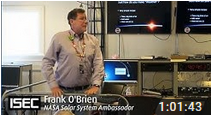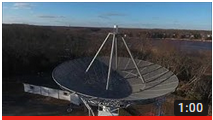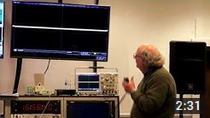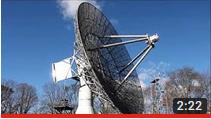 This is an historical overview of TIROS-1, its legacy and, ultimately, the birth of remote earth observation as we know it today. Over 50 years ago, the first weather satellite, TIROS, was controlled through the tracking station at Camp Evans. Since that time, technology has improved dramatically, and the newest generation of satellites are giving breathtaking new insights on the weather. We will discuss the evolution of the technologies, forecast modeling and the limits to what meteorologists can do.
This is an historical overview of TIROS-1, its legacy and, ultimately, the birth of remote earth observation as we know it today. Over 50 years ago, the first weather satellite, TIROS, was controlled through the tracking station at Camp Evans. Since that time, technology has improved dramatically, and the newest generation of satellites are giving breathtaking new insights on the weather. We will discuss the evolution of the technologies, forecast modeling and the limits to what meteorologists can do.
Host: Frank O’Brien / Video: David Sica
 This is footage of the TLM-18 antenna taken from a UAV.
This is footage of the TLM-18 antenna taken from a UAV.
Video and editing courtesy of Sica Productions
http://www.sicaproductions.com/
Video: Tim Flynn
 Project Diana, named for the Roman moon goddess Diana, was an experimental project of the US Army Signal Corps in 1946 to bounce radar signals off the Moon and receive the reflected signals. This was the first experiment in radar astronomy and the first active attempt to probe another celestial body. It was the inspiration for later EME (Earth-Moon-Earth) communication techniques. On 10 January 1946 at 11:58 AM, Lt. Col. John H. DeWitt and Chief Scientist E. King Stodola sent radio signals toward the moon, and three seconds later, heard their echo.
Project Diana, named for the Roman moon goddess Diana, was an experimental project of the US Army Signal Corps in 1946 to bounce radar signals off the Moon and receive the reflected signals. This was the first experiment in radar astronomy and the first active attempt to probe another celestial body. It was the inspiration for later EME (Earth-Moon-Earth) communication techniques. On 10 January 1946 at 11:58 AM, Lt. Col. John H. DeWitt and Chief Scientist E. King Stodola sent radio signals toward the moon, and three seconds later, heard their echo.
70 years later, on 10 January 2016 at 11:58 AM, Princeton University Professor Daniel Marlow recreated their experiment using the Cold War vintage TLM-18 antenna system at the same location.
Host: Jeffery Harshman / Video: David Sica
 In 2016, the Juno spacecraft entered orbit around Jupiter. Packed with science instruments, it has revolutionized our understanding of the largest planet in the Solar System. The talk centers on the discoveries and dramatic images returned from Juno.
In 2016, the Juno spacecraft entered orbit around Jupiter. Packed with science instruments, it has revolutionized our understanding of the largest planet in the Solar System. The talk centers on the discoveries and dramatic images returned from Juno.
Host: Frank O’Brien / Video: Will Patterson
